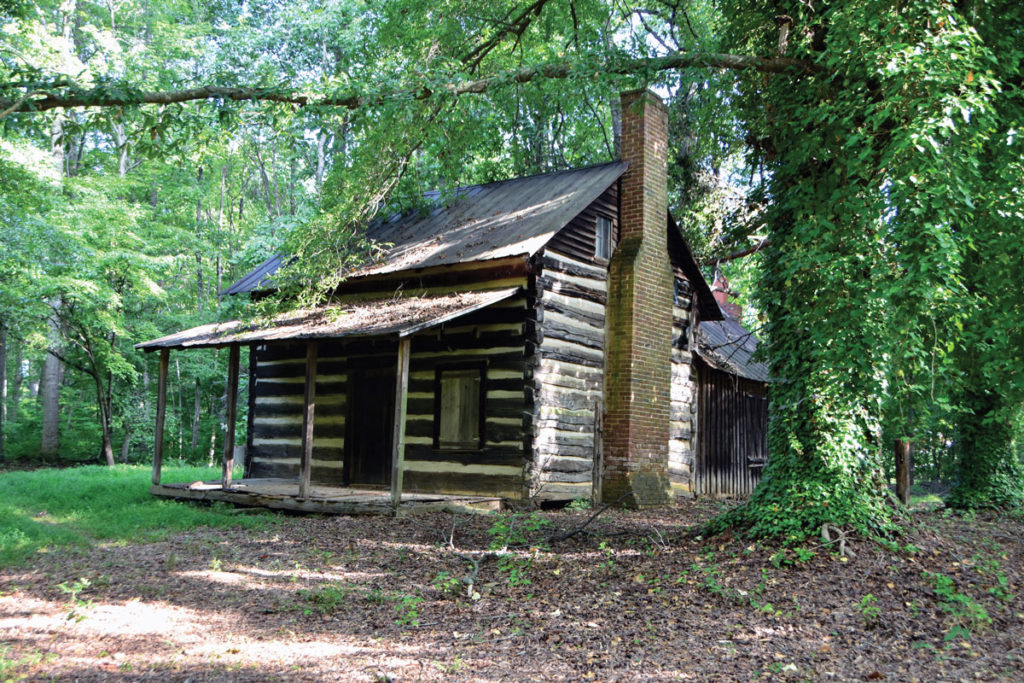An American Story
By Kelly Hargett

According to Kernersville native and retired professor Don Stanley, who traced his family history back in 1971, his ancestor Thomas Stanley made his way to America from England sometime in the early 1680s. Through this extensive genealogy, we learn that Thomas Stanley may have been seeking the religious freedom that the American colonies offered, however, we can only speculate. We know that Thomas received a land grant in 1686 in what is now known as Hanover, Virginia. He soon settled into life and had three sons, each baptized in the Episcopalian Church, which was the official church of the colonies. After 1700, Thomas Stanley and his children begin to show up in the Quaker record pointing to a religious conversion by the family. Stanley and his neighbors were able to form a Quaker congregation there in Virginia. The three boys had a total of 30 children, which was not uncommon for the day.
By 1750, the western region of North Carolina was being settled, and the Quakers found a pleasing spot in New Garden, which is now Guilford County. The Quaker settlements in Guilford County were growing at the same time as the Moravian settlements in nearby Wachovia (now Forsyth County). Thomas Stanley’s grandson, Strangeman Stanley left the family’s settlement in Virginia and made his way to the new Quaker settlement in New Garden. At 19, he was at the perfect age to strike out on his own and help the Quakers to grow their new congregation. In February of 1764, Strangeman was officially accepted into the New Garden Quaker congregation. He soon married and settled west of Reedy Fork Creek. Strangeman Stanley and his wife had nine children while he continued to acquire more land and upon his death, divided it among his children.
It would be Strangeman’s grandson, Samuel Stanley, who would buck the Quaker tradition. By the 1800s Quakers began marrying people who were outside of their religion. This practice was called “marrying out” and lead to violators being “disowned” by the church. Many of these people turned to the Methodist church. In 1815, Samuel was disowned by the church for marrying a non-Quaker. He and his wife moved away from the family land near Reedy Fork Creek and struck out on their own. By 1822 he had purchased 149 acres of land on the Middle Fork of Muddy Creek about two miles west of Dobson’s Cross Roads. Today we know this area as Hopkins Road. He continued to purchase more land and he and his wife had four children.
It was Strangeman’s grandson Romulus who inherited all of this property from his grandfather. By 1875 Romulus and his wife were raising their children on the Stanley farm in the Hopkins Road area. Sometime in the late 1870s or early 1880s, Romulus built a small cabin on his property for his children. The cabin was called a weaning cabin and was intended for his children, once they were married, to live in for the first year or so of their married life. This allowed the young couple time to get their finances in order and get their “feet” under them before they struck out on their own. Eventually, the Stanley family’s land was divided up and sold, but the weaning cabin remained intact, a symbol of a truly American story.
In 2019, the property that the weaning cabin sat on was sold to a developer. Alderman Joe Pinnix stepped in and asked that the cabin be donated to the Town of Kernersville. The developer agreed and the Town had the weaning cabin moved to sit behind the Kernersville Museum in downtown Kernersville. Currently, the weaning cabin, along with a stable that was also on the property, is being restored for the purposes of creating another outdoor exhibit for the Kernersville Museum to operate on behalf of the Town. To help with the restoration costs of this project, last month the Kernersville Museum was awarded a $10,000 grant made possible through the sponsorship of the Joseph Kerner Chapter of the National Society Daughters of the American Revolution (DAR) to restore the porch of the weaning cabin and help complete phase one.
Together with the tobacco barn, these structures will create a historical village that will allow visitors to experience what living in Kernersville looked like in the 19th century. Phase one of the restoration project will conclude this summer. The village will be open to visitors during the Kernersville Museum’s open hours, Tuesday – Friday 10 am – 4 pm, Saturday 10 am – 2 pm. For more information, visit www.KernersvilleMuseum.org.


I am so glad to learn the history of the cabin! It is wonderful that it is being preserved.